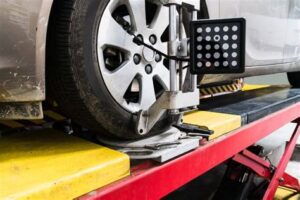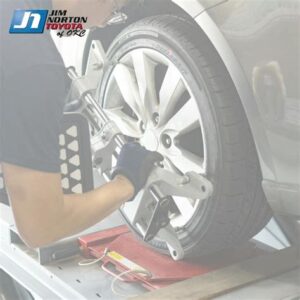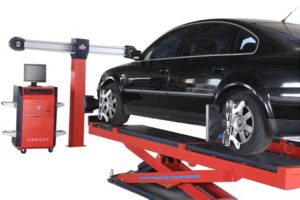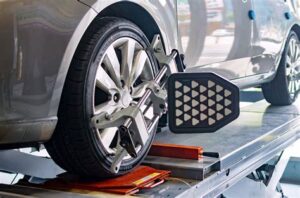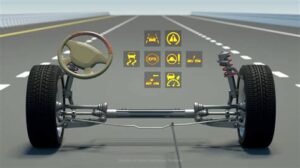Is your car pulling to the right even after a recent alignment? This frustrating issue can compromise both your safety and driving experience. Understanding the underlying causes is crucial to finding a lasting solution. In this article, we will explore common reasons why your vehicle may veer off course, including suspension problems and tire pressure effects. We’ll also provide valuable tips for diagnosing alignment issues and preventative maintenance strategies to keep your car driving straight. Stay with us as we delve into this automotive dilemma and offer guidance to restore your vehicle’s performance. Don’t let a minor alignment problem turn into a major headache—read on for insights that can help get you back on track.
Common Causes Of Car Pulling To The Right After Alignment
Experiencing car pulling to the right after an alignment can be both frustrating and concerning. Understanding the common causes behind this issue is crucial for effective troubleshooting. Here are some of the primary reasons this may occur:
| Cause | Description |
|---|---|
| Uneven Tire Wear | Worn or uneven tires can lead to differences in traction, resulting in the vehicle pulling to one side. |
| Brake Issues | Sticking brake calipers or uneven brake pads can create drag on one side, causing the car to pull. |
| Incorrect Camber Settings | Misadjusted camber angles can cause one tire to make more contact with the road than the other, leading to pulling. |
| Faulty Suspension Components | Worn ball joints, tie rods, or control arms can affect vehicle alignment and lead to pulling issues. |
| Improper Tire Pressure | Inconsistent tire pressure can create disproportionate forces on the vehicle, resulting in a pull to the right or left. |
Recognizing these issues early on can help you address the problem before it exacerbates into more significant car maintenance issues. Regular checks and maintenance are essential to keeping your vehicle in optimal condition and preventing car pulling problems in the future.
How Suspension Issues Contribute To Car Pulling Problems
One of the significant factors that can lead to car pulling to one side after an alignment is the condition of the suspension system. The suspension is responsible for maintaining tire contact with the road, providing stability and control. If any components within this system are worn or damaged, they can cause uneven weight distribution and affect the vehicle’s alignment.
Common suspension issues that may contribute to car pulling include:
- Worn Ball Joints: These joints allow for smooth movement between the steering knuckles and the control arms. If they wear out, they can create a loose connection that alters the alignment.
- Worn Bushings: Bushings are small rubber or polyurethane components that allow for flexibility in the suspension system. When these wear out, it can lead to misalignment and uneven tire wear.
- Damaged Control Arms: Control arms connect the vehicle’s suspension to the chassis. If they are bent or damaged, they can affect the angle of the wheels, leading to car pulling.
- Spring Issues: Springs support the vehicle’s weight and maintain ride height. If the springs are sagging or broken, it can shift the weight distribution and cause a pull in one direction.
It is essential to regularly inspect your suspension system to ensure it’s functioning correctly. Any worn or damaged parts should be replaced promptly to prevent issues that can lead to car pulling. Additionally, addressing suspension problems can contribute to better handling, improved tire life, and a more comfortable ride overall.
Effects Of Tire Pressure On Car Pulling Behavior
Tire pressure plays a crucial role in the overall handling and performance of your vehicle. When it comes to car pulling, improper tire pressure can significantly impact the way your car drives. Here’s how:
- Underinflated Tires: If one or more of your tires are underinflated, it can create uneven wear and cause the vehicle to pull to one side. This is because the affected tire creates more drag on the road, leading to a difference in performance compared to properly inflated tires.
- Overinflated Tires: Conversely, overinflated tires can also cause pulling. They may create a smaller contact patch with the road surface, resulting in less traction and making it more likely that the car will drift to one side, depending on the distribution of pressure among all tires.
- Weight Distribution: Changes in tire pressure can affect the weight distribution of your vehicle. If the tires on one side are inflated differently than those on the opposite side, it can lead to a noticeable car pulling effect, making it feel as if the vehicle is being dragged in one direction.
- Potholes and Road Damage: Regularly hitting potholes or other forms of road damage can cause tire pressure to fluctuate. If your tires lose air quickly after impact, it could lead to pulling as your vehicle becomes imbalanced.
To avoid these issues, it’s essential to regularly check your tire pressure using a reliable gauge and adjust them according to the manufacturer’s recommendations. Ensuring that your tires are properly inflated will not only enhance safety but also help maintain straight driving and alleviate any car pulling symptoms you may be experiencing.
Diagnosing Alignment Problems Leading To Car Pulling
When experiencing car pulling to the right after an alignment, it is crucial to conduct a thorough diagnosis to pinpoint the underlying alignment issues. Here are some key steps to effectively diagnose the problem:
- Visual Inspection: Start by inspecting the vehicle’s tires for uneven wear patterns, which can indicate misalignment. Look for signs such as wear on the inner or outer edges of the tire tread.
- Alignment Machine Check: Utilize a professional alignment machine for a comprehensive analysis of the vehicle’s alignment settings. This will help identify discrepancies in the camber, toe, and caster angles.
- Test Drive Observation: Take the car for a test drive to assess how it handles. Pay attention to the steering wheel position, vibrations, or other unusual behaviors while driving straight on a flat road.
- Check Suspension Components: Inspect the suspension system for any damaged or worn parts, such as control arms, bushings, or struts, as these components can impact alignment and contribute to car pulling.
- Examine Steering System: Ensure that the steering system is functioning correctly and that the steering wheel is properly centered. Any issues here can exacerbate alignment problems.
If these steps point to misalignment or other related issues, it is advisable to seek assistance from a qualified mechanic to perform necessary adjustments or repairs. Proper diagnosis not only addresses the immediate problem but also contributes to safer driving conditions and prolonged tire life.
Preventing Car Pulling: Regular Maintenance Tips
To effectively prevent car pulling issues, regular maintenance is essential. Here are some key tips that can help you keep your vehicle aligned and stable:
- Check Tire Pressure Regularly: Keeping your tires inflated to the recommended pressure can prevent uneven wear and help maintain proper alignment.
- Inspect Tire Condition: Look for signs of wear, such as uneven tread. Replace tires that show significant wear to ensure balanced handling.
- Regular Alignment Checks: Have your alignment checked at least once a year or whenever you notice your car pulling to one side. This is especially important after hitting a large pothole or bump.
- Rotate Tires: To promote even wear, rotate your tires as recommended by the manufacturer, usually every 5,000 to 7,500 miles.
- Monitor Suspension Components: Regularly inspect your suspension system for any signs of wear. Damaged shock absorbers, springs, or bushings can lead to alignment issues.
- Watch for Signs of Pulling: Take note if your car consistently pulls to one side, as early detection can prevent further issues.
Implementing these maintenance tips can significantly reduce the risk of your car pulling and enhance your overall driving experience.
Frequently Asked Questions
What does it mean if my car pulls to the right after alignment?
If your car pulls to the right after an alignment, it indicates that the wheels are not correctly aligned or that there may be an underlying issue unrelated to alignment, such as uneven tire pressure or damaged suspension components.
What are some common causes for a car pulling to the right after an alignment?
Common causes include incorrect alignment settings, worn-out suspension parts, uneven tire pressure, or uneven tire wear. It’s important to have these issues checked to ensure safe driving.
How can I determine if the alignment was done correctly?
To determine if the alignment was done correctly, check the alignment printout provided by the technician, which indicates the angles of each wheel. Additionally, a test drive should reveal that the steering wheel is centered and the car tracks straight.
Can tire pressure affect whether my car pulls to the right?
Yes, uneven tire pressure can lead to pulling. If one tire has significantly higher or lower pressure than the others, it can create an imbalance that causes the car to pull to one side.
What should I do if my car continues to pull to the right after alignment?
If your car continues to pull after an alignment, it’s recommended to return to the mechanic for an inspection. They can check for other issues such as worn tires, suspension problems, or incorrect alignment settings.
Is it safe to drive a car that pulls to the right?
While it may be drivable, it’s not safe to ignore a car that pulls to one side. It can affect handling and braking, leading to potential accidents. It’s best to address the issue as soon as possible.
Can road conditions affect the pulling of my car?
Yes, road conditions can contribute to a car pulling to the right. If the surface is uneven, sloped, or has ruts, it may cause your vehicle to drift. However, persistent pulling may indicate a mechanical issue that should be checked.
